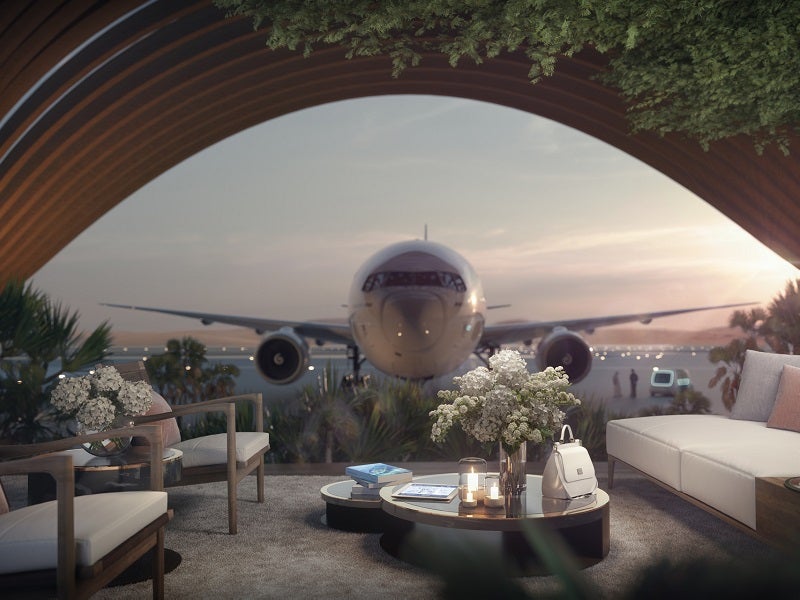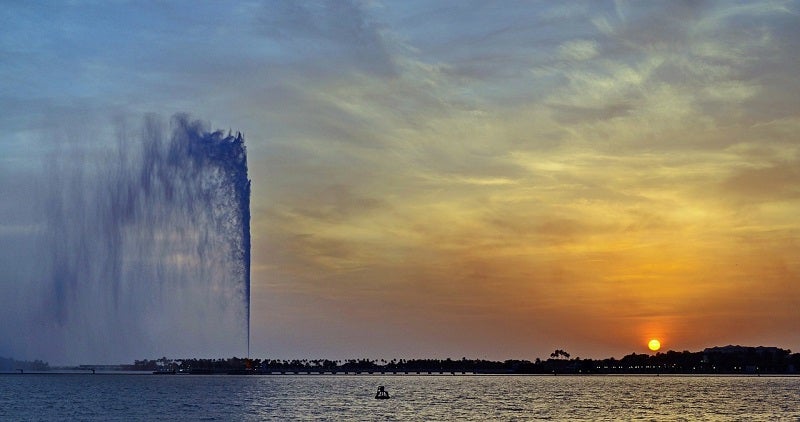
Saudi Arabia has grand plans to expand tourism in the country, with its colossal Red Sea Project playing a significant role.
The scope of the luxury project is vast, covering a total area of 28,000km2. This will take in a diverse landscape that contains the likes of significant historical and cultural sites, dormant volcanoes and mountain canyons.
To serve such a large tourist destination, a new airport is required. UK architects Foster + Partners won the contract to design Red Sea International Airport. The firm has a proven track record in design services for high-profile transport and infrastructure projects worldwide. Its extensive portfolio includes Hong Kong International Airport, Canary Wharf Underground Station in the UK, and France’s Millau Viaduct.
The firm also has previous experience in Saudi Arabia, having worked on the Jeddah Metro and designed stations for the Haramain High Speed Rail route.
“The Red Sea Airport has been envisaged as a gateway to one of the most unique resorts in the world and an integral part of the visitor experience,” says Gerard Evenden, head of studio at Foster + Partners. “Inspired by the colours and textures of the desert landscape, the design seeks to create a calm and luxurious journey through the terminal and will become a transit hub for visitors coming in by both land and air.”
“The airport reflects traditional Saudi Arabian hospitality and will provide unique levels of service given to passengers. Local materials and textures have been selected to give the design a sense of place. The airport also reflects the modernisation of Saudi Arabia by incorporating smart technologies and building systems.”
It is estimated that the airport will have the capacity to handle 900 passengers an hour and serve one million passengers per annum.
A design influenced by surroundings

The Red Sea Airport terminal’s roof will feature distinctive shells that are influenced by desert sand dunes. Inside will house what is described as a ‘green oasis’, consisting of indigenous plants in garden areas. It is hoped that this array of greenery will bring an air of calmness to the travelling experience. Its designers hope that the terminal will have what they describe as a ‘resort-like atmosphere’.
Despite the vastness of the wider resort that Red Sea Airport will be part of, the designers intend to give the facility the feel of a smaller terminal used by private aircraft. It is hoped this will be achieved by offering more intimate rooms and areas where luxury is at the forefront.
“The design challenges have mainly revolved around creating passenger comfort without increasing energy use,” adds Evenden. “The balance of creating shade while still allowing sufficient sunlight for the plants has been quite complex. We also have been able to reduce passenger waiting times, taking them directly through the terminal without affecting security protocols.”
Arrivals and departures
With arrivals, speed is of the essence. All security checks for Red Sea Airport are intended to take place as efficiently as possible. Upon arrival, passengers will follow the path along to the Welcome Centre, where they will be greeted by Red Sea resort staff. The Welcome Centre will provide samples of what visitors can expect during their stay.
Another time-saver for arrivals is with checked-in baggage. Items are sent straight to resorts, meaning that passengers don’t have to wait for their suitcases to be unloaded from the cargo hold and then grab from the baggage carousel.
In addition, arrival passengers generally spend less time in airports than those who are waiting for departures. For this reason, the airport has been designed with larger areas available for departing passengers than for arrivals.
The departure area will feature five suites in the form of pods. Each pod will house various restaurants and leisure facilities.
In another baggage innovation, passengers will not have to worry about taking their luggage to the airport for departure as it will be checked-in when they check-out of their resort. Their baggage will then be loaded straight onto aircraft.
Moving towards sustainability

Sustainability is a big part of all Fosters + Partners projects, with designs that optimise energy use. The Red Sea Airport is no different and will feature a number of environmental design innovations.
“The Red Sea Airport is orientated towards the north, which allows for uninterrupted views to the aircraft hangars without direct sun hitting the façade,” says Evenden. “This is further reinforced with a series of large cantilevering shells, which protect the building.”
“We have moved away from the traditional air-conditioned air bridges that connect the planes and instead opted for an arrival experience through lush landscaped gardens. These gardens act as a thermal buffer between the inside and the outside. The airport is arranged around five mini-terminals which allow areas of the airport to be closed during quieter times, avoiding the need to air-condition huge volumes of air.
“The airport is designed to achieve a LEED platinum rating and will be powered by 100% renewable power.”
Sustainability has also been a key consideration when choosing the materials to use for construction and minimising the carbon footprint wherever possible.
“The materials and textures are being selected to be as sustainable as possible, which will impart a sense of place,” explains Evenden. “Transportation of materials is a source of pollution, so we aim to reduce this by using local materials. Electric vehicles ferry people to and from their resorts.”
In another sign of the Red Sea Project’s focus on environmental issues, it has pledged for its operations to be free from single-use plastics.
If the resort is to be the success that its backers envisage, access to clean water will be critical for the number of visitors and staff. The Kingdom reportedly consumes twice as much water as the world average, with minimal rainfall to replenish supplies. A warming climate is expected to heighten this issue further.
Saudi Arabia is already the world leader in producing desalinated water, with a daily output capacity of 117 million cubic feet.
In March 2019, the Kingdom announced plans to cut the average water consumption per person a day from 263 litres to 200 litres this year, decreasing further to 150 litres by 2030. It remains to be seen if this water issue will have any effect on tourism.
Red Sea Airport is due to open in 2022 as part of the Red Sea Project’s first phase. The wider resort will feature 3,000 hotel rooms across five island and two mainland locations. Once the project is complete, it will include a total of 8,000 hotel rooms spread over 22 islands and six sites on the mainland.
The Red Sea Project was originally announced in July 2017 by Saudi Crown Prince Mohammad bin Salman. Upon completion, it is predicted that the resort will contribute $5.86bn per annum to the Saudi Arabian economy.



